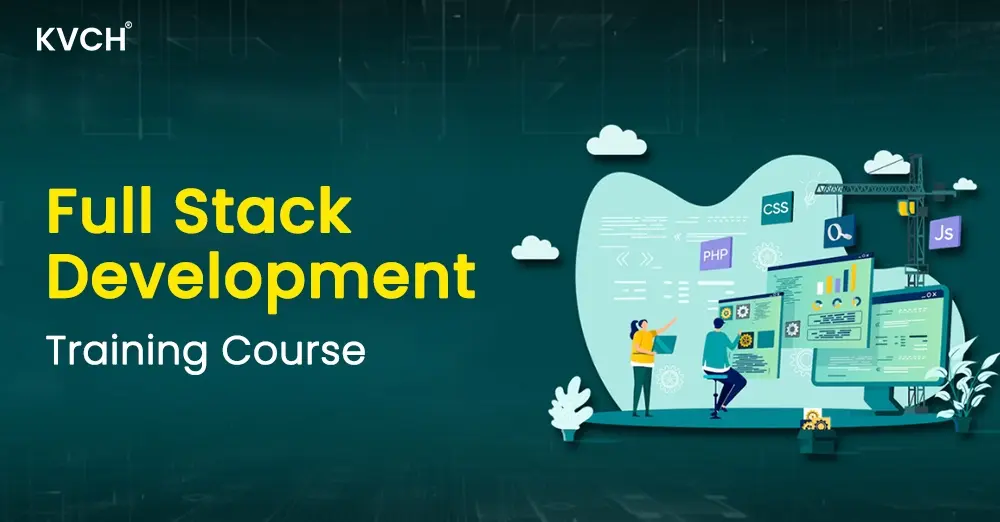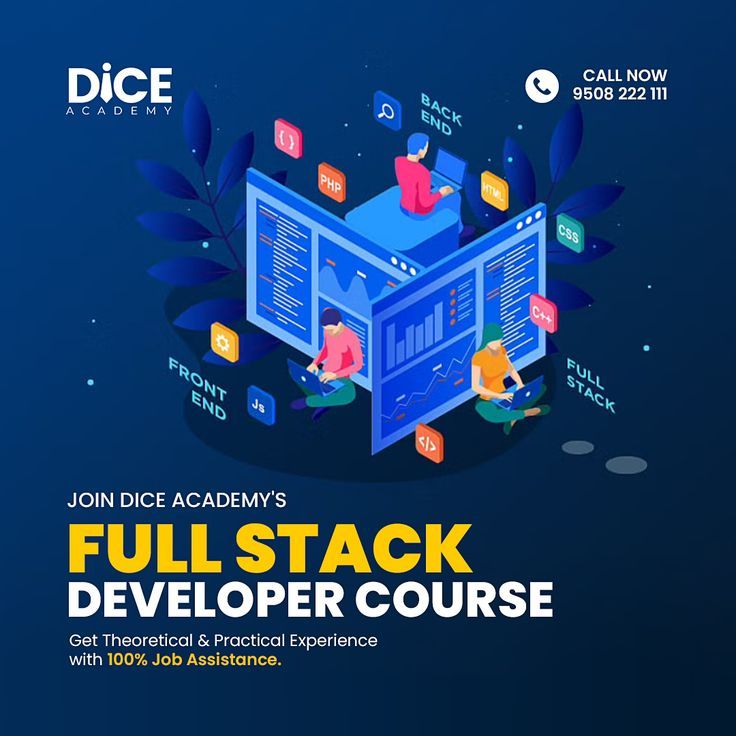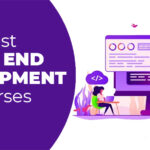Ever stare at a website and wonder, "How on Earth did they make that?" For years, that was me. I’d click around, use apps, and admire the digital world, feeling completely clueless about the magic behind the screen. I was looking for a change, something challenging yet creative, a skill that could truly open doors. That’s when I stumbled upon the idea of a "Full Stack Course," and let me tell you, it turned out to be one of the most exciting adventures of my life.
If you’re reading this, chances are you’re curious too. Maybe you’re dreaming of building your own app, launching a new career, or just understanding the tech world a little better. Whatever your reason, pull up a chair. I’m going to share my story, from feeling like a complete beginner to confidently building web applications, and hopefully, inspire you to start your own coding journey.
What Even Is "Full Stack," Anyway? (Simplified for Beginners!)
Before I signed up, the term "Full Stack" sounded like some kind of tech wizardry. But it’s actually quite simple when you break it down. Imagine a restaurant:
- The Front-End (The Dining Room): This is everything you see and interact with. The tables, the menu, the waiter taking your order, the food presented beautifully. In web terms, it’s the website’s design, the buttons, the text, the images – basically, what loads in your browser. This is where you use languages like HTML (the structure), CSS (the style), and JavaScript (the interactivity, like clicking a button and something happens). Frameworks like React or Vue make building complex front-ends much easier.
- The Back-End (The Kitchen): This is where all the magic happens behind the scenes. The chefs cooking, the ingredients being prepped, the orders being processed. On a website, the back-end is the server that stores information, handles user logins, processes data, and talks to the database. Languages like Node.js (which uses JavaScript!), Python, or Ruby are common here.
- The Database (The Pantry): This is where all the ingredients are stored – neatly organized, ready to be used. For a website, the database is where all the information lives: user profiles, product lists, blog posts. It’s like the website’s long-term memory. Popular databases include MongoDB (which I learned) or PostgreSQL.
So, a "Full Stack Developer" is someone who understands and can work with all three parts – the front-end, the back-end, and the database. You’re not just decorating the dining room; you can cook in the kitchen and manage the pantry too! That’s what a Full Stack Course aims to teach you.
My Journey Begins: HTML, CSS, and That First "Aha!" Moment
Stepping into my first Full Stack Course session, I was a mix of nervous excitement. Could I really learn this? I barely knew how to open a command prompt!
Our first few weeks were dedicated to the front-end, starting with the absolute basics: HTML and CSS. It felt like learning a new language, but a surprisingly visual one. HTML was about structuring content – "This is a heading," "This is a paragraph," "This is an image." CSS was about making it pretty – "Make this heading blue," "Give this paragraph a bigger font," "Center this image."
I remember the thrill of typing a few lines of code and seeing a web page appear in my browser, even if it was just a simple heading and a paragraph. It was like magic! Then came JavaScript, the brain of the web. This was a bit tougher. It’s where you start thinking logically, telling the page to do things. My first JavaScript "hello world" alert box popping up was a genuine "aha!" moment. It felt like I’d just whispered a secret command to my computer, and it actually listened!
Diving Deeper: Front-End Magic with React
Once we had a solid grasp of HTML, CSS, and basic JavaScript, the course introduced us to React. Oh, React! At first, it felt like a whole new universe. It’s a JavaScript library that helps you build complex, interactive user interfaces more efficiently.
Suddenly, instead of building one giant HTML file, we were building small, reusable "components" – like LEGO bricks. A button could be a component, a navigation bar could be a component, a user profile card could be a component. This made building bigger applications much more manageable.
There were definitely moments of frustration. Debugging (finding and fixing errors) felt like searching for a tiny needle in a giant haystack. But the feeling when a complex UI component finally rendered perfectly, when all the pieces clicked together and my web page looked alive and responsive, was incredibly rewarding. It was like seeing my digital creation come to life, pixel by pixel.
The Unseen Power: Conquering the Back-End
After mastering the visible part of the web, it was time to dive into the invisible: the back-end. This is where things got really interesting. We learned Node.js, which allowed us to use JavaScript on the server side – a huge advantage for a Full Stack developer because you’re using one language across the entire application!
We started building APIs (Application Programming Interfaces). Think of an API as a waiter in our restaurant analogy. The front-end (dining room) tells the API (waiter) what it needs (e.g., "Get me a list of all products"). The API then goes to the back-end (kitchen) to fetch that data, or process a request (e.g., "Save this new user"), and brings the result back to the front-end.
Building my first working API endpoint was a real triumph. Sending a request from my browser and getting data back from my own server felt like I was truly connecting the pieces of the internet. It was challenging, involving a lot of logical thinking and understanding how servers handle requests, but the satisfaction of seeing it work was immense.
The Memory Bank: Understanding Databases
No web application is complete without a place to store its information. This is where databases came in. Our course focused on MongoDB, a "NoSQL" database that stores data in a flexible, document-like format.
Learning how to store, retrieve, update, and delete data (often called "CRUD" operations) was fascinating. Suddenly, my web applications weren’t just static pages; they could remember things! Users could sign up, create profiles, post content, and all that information would be safely stored and retrieved whenever needed.
I remember building a simple to-do list application. Being able to add a task, save it to the database, close my browser, reopen it later, and see my tasks still there was a powerful moment. It showed me the true potential of building dynamic, data-driven applications.
Putting It All Together: My First Full Stack Project
The real magic of the Full Stack Course happened when we started working on our final projects. This was where everything we learned – HTML, CSS, JavaScript, React, Node.js, Express, and MongoDB – had to come together.
It was tough. There were days when I felt completely stuck, staring at lines of code that refused to cooperate. But with the help of instructors and fellow students, slowly but surely, my project started taking shape. I was building a social media clone, where users could create accounts, post messages, and follow each other.
Seeing my vision transform from an idea into a functional web application, built entirely by my own hands (and brain!), was an incredible feeling. It wasn’t just about writing code; it was about problem-solving, persistence, and the joy of creation. That moment when my front-end spoke to my back-end, which then talked to my database, and everything worked flawlessly, was pure exhilaration. I had truly gone from wondering "how do they make that?" to confidently saying, "I just made that!"
Why a Full Stack Course Changed My Life (and Why It Might Change Yours)
Taking a Full Stack Course wasn’t just about learning to code; it was about unlocking a new way of thinking and opening up a world of possibilities.
- You Become a Creator: The most rewarding part is the ability to build things. Have an idea for an app? You’ll gain the skills to bring it to life.
- Versatility is Key: Knowing both front-end and back-end makes you incredibly valuable. You can understand the entire development process, which is highly sought after in the tech industry. This versatility gives you more career options.
- Problem-Solving Power: Coding is essentially structured problem-solving. You’ll develop a logical mindset that extends far beyond just writing code, helping you tackle challenges in all aspects of life.
- A Thriving Career Path: The demand for skilled web developers, especially Full Stack developers, is consistently high. It’s a field with excellent growth potential and opportunities.
- It’s Empowering: There’s a profound sense of accomplishment in taking a complex idea and breaking it down into manageable parts, then building it piece by piece until it works. It teaches you that you can learn hard things.
- Community and Collaboration: I met incredible people – instructors who were passionate about teaching and fellow students who became my coding buddies. Learning together, struggling together, and celebrating breakthroughs together made the experience even richer.
Tips for Aspiring Full Stack Developers (Beginners, Listen Up!)
If you’re thinking about diving into a Full Stack Course, here are a few things I learned along the way:
- Embrace the Struggle: There will be moments of frustration. Code won’t work, errors will appear. This is normal! See it as a puzzle to solve, not a failure.
- Ask Questions: Seriously, ask all the questions. Your instructors are there to help, and your peers are likely wondering the same thing. No question is silly.
- Build, Build, Build: The best way to learn is by doing. Don’t just follow tutorials; try to build your own small projects. Even a simple calculator or a weather app will solidify your understanding.
- Practice Regularly: Consistency is more important than long, infrequent coding sessions. Even 30 minutes a day can make a huge difference.
- Don’t Compare Yourself: Everyone learns at their own pace. Focus on your own progress and celebrate your small victories.
- Stay Curious: The tech world is always changing. Keep exploring new tools, languages, and concepts.
Your Adventure Awaits!
My journey through a Full Stack Course was tough, exciting, and ultimately, incredibly rewarding. It took me from a curious beginner to someone who can confidently design, build, and deploy web applications. It wasn’t just about learning syntax; it was about transforming how I think and empowering me to create.
If you’ve been on the fence, wondering if you have what it takes, let my story be your nudge. The world of web development is vast and welcoming, and a Full Stack Course can be your map. Take that first step. You might just surprise yourself with the incredible things you can build. Your epic adventure is waiting!



